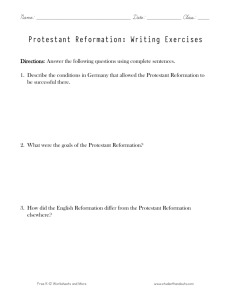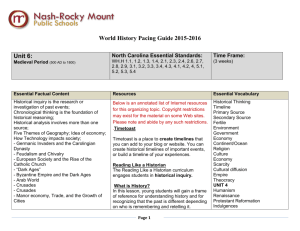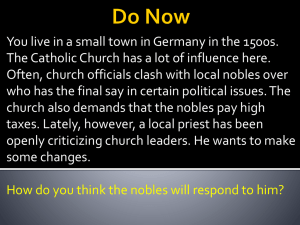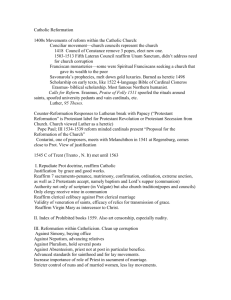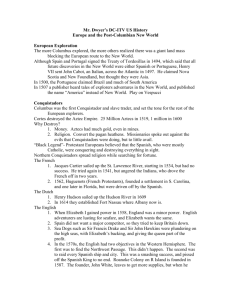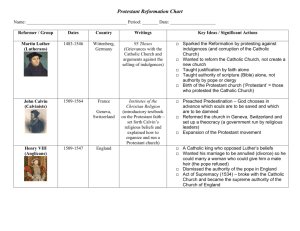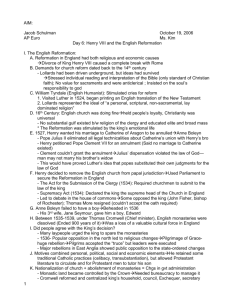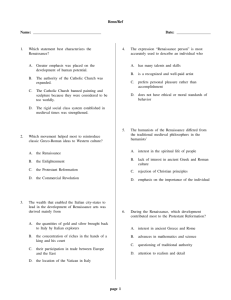Ashley_Reiff_The_Counter
advertisement
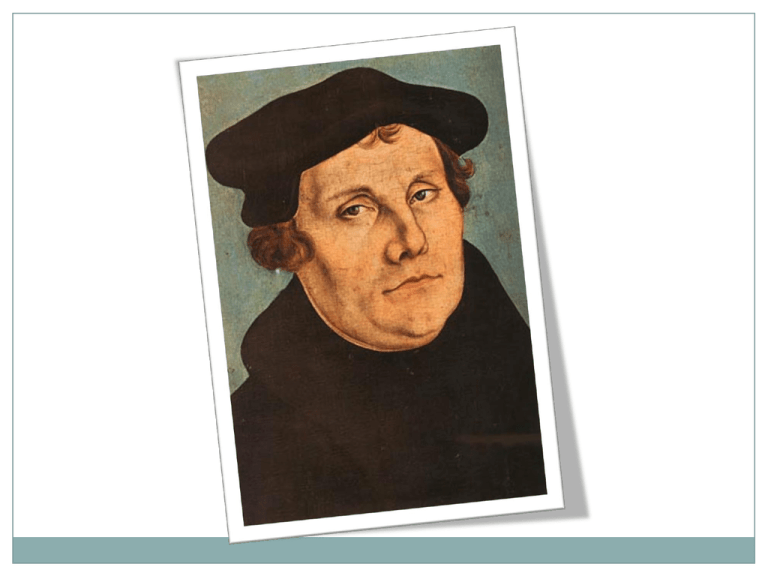
The CounterReformation EFFECTS OF THE REFORMATION Causes of the Reformation Humanist values led people to question church authority. Some clergy were corrupt, worldly, or poorly educated. Martin Luther posted his Ninety-five Theses. The printing press helped spread Reformation ideas. 1) Many Protestant sects developed St. Paul UMC St. Gerards Catholic Church St. Charles Catholic Church Shawnee Alliance Shawnee Presbyterian Crossroads Church Lima Community Church of the Nazarene 2) Church Leaders Reformed the Church Jesuits Founded by Ignatius of Loyola Jesuit colleges: Georgetown, Xavier, Loyola, Walsh-Jesuit Concentration on education 2) Church Leaders Reformed the Church (Cont’d) Council of Trent Convened by Pope Paul III in 1545. Delegates examined criticisms made by Protestants of the Catholic Church Addressed the abuses of the church: Corruption of the church Training of priests was regulated Financial abuse was curbed Sale of indulgences was abolished 2) Church Leaders Reformed the Church (Cont’d) Women in the church Roman Inquisition Church court established by the Catholic church Tried people who were accused of being Protestant, practicing witchcraft, or breaking church law. 3) Religious Intolerance & Anti-Semitism Increased Renewed zeal for Catholic faith Persecution and hysteria Heretics witchcraft Political Effects Rising sense of nationalism Protestant Reformation encouraged the formation of independent states & nation Separation of church & state 4) Religious Conflicts Religious conflicts spread across Europe. Italian Wars Spain & France fought for control of Italian peninsula Significance: Italian renaissance expanded throughout Europe Peasants’ Wars Took place in Germany Peasants were upset with high taxes & lack of power. Effects of the Reformation Many Protestant sects developed. Church leaders reformed the Catholic Church. Religious intolerance and anti-Semitism increased. Religious conflicts spread across Europe.

